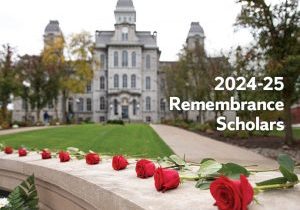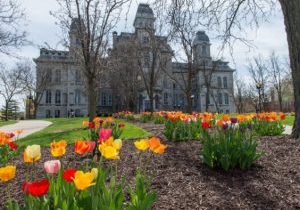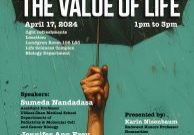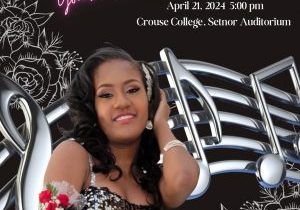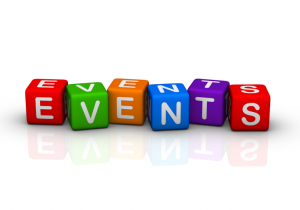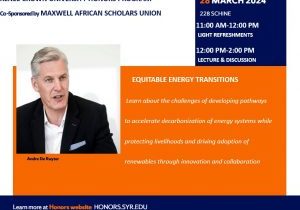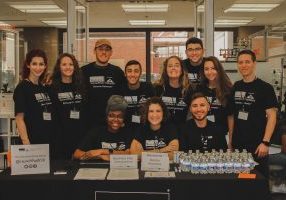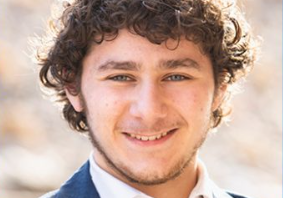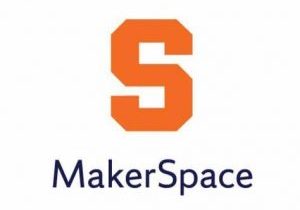
- Hi Honors Students – I’m cross-posting this over from the Center for Fellowship and Scholarship Advising (CFSA) blog. We’ve been featuring SU student winners of nationally competitive awards and asking them 6 questions about their experiences. In this edition, Honors student Justin Elkhechen describes his summer research experience through the Amgen Scholars Program.
Are you planning for next summer or working on applications? CFSA is here to help! Check out this link to a list of summer opportunities: http://nationalscholarships.syr.edu/?page_id=3718
No matter where you are in the process, come by our drop-in advising sessions especially to talk about summer plans or applications:
Summer Starts Here
Jan. 16th 3:00 – 4:30 PM
Jan. 22nd 11:00 AM – 1:00 PM
Bird Library, Room 123
Bring drafts for comments, or just bring your notebook or laptop to get started. It’ll be a great way to continue or jump start your application process. We’ll have advisors on hand to answer questions, provide feedback on essay drafts, or talk about where to start.
- 6 questions with…Justin Elkhechen ’15 (Amgen Scholars Program)
1) How did you hear about the Amgen Scholars Program?
My name is Justin N. Elkhechen and I participated in the Amgen Scholars Program at the Stanford University School of Medicine this past summer. The program provides undergraduate students from across the United States and Puerto Rico with opportunities to participate and engage in a summer research project under some of the world’s leading scientists. I initially heard about this program through a meeting with Kate Hanson, the Assistant Director of the Renée Crown University Honors Program. In addition, I also gained a first-person perspective on the program through the experiences of a fellow biochemistry major’s study at Columbia University.
2) What was the most surprising aspect of your experience at Stanford University?
During my time at Stanford University, one of the most surprising aspects was the size of the campus. Stanford University is, by acre, the largest college campus in the United States sitting on 8,183 acres. Moreover, it is the second largest in the world after Moscow State University. Thankfully, the program provided us with bicycles to get around, but even still biking from my house to the lab took about 10-15 minutes. In addition I was also fascinated by the architecture of the each building, including Hoover Tower, named after the 31st President, Herbert Hoover; this tower is the tallest building on campus. Founded in 1919, this building now serves as a library and archive to some of the world’s most important documents. Astonishingly, the archives contain more information on Italian fascism and Mussolini than Italy itself.
3) Who was a particularly interesting person that you met?
The Stanford University School of Medicine prospers in the presence of distinguished faculty members and Nobel laureates that have led, and continue to lead their respective fields of biomedicine. My research experience was under the mentorship of Dr. Marius Wernig and Dr. Sean Wu from both the Institute for Stem Cell Biology and Regenerative Medicine and the Cardiovascular Institute, respectively. As a result of this dual mentorship, I was able to regularly meet with Dr. Wernig, my primary Principal Investigator, in addition to Dr. Sean Wu, a current collaborator of Dr. Wernig. Dr. Wernig was the first to successfully convert fibroblasts directly to neurons, bypassing an induced pluripotent stem cell (iPSC) state. In addition, Dr. Sean Wu is one of the top leaders in his field, along with his colleague, Dr. Joseph Wu, and uses in-vitro culture of murine and human embryonic stem cells as a model to investigate cardiogenesis. I was very fortunate enough to be introduced and meet with all three of these professors this past summer.
4) Tell us about your research there. What did your daily schedule look like?
My research this summer was at the junction between neuroscience and cardiology. As a result of this collaboration between the two scientists, my time was spent in two laboratories. On average, I would spend about seven hours per day in the lab and go in five-to-six times per week. The goal of my study was to generate purkinje fiber-like cells in an effort to potentially provide regenerative therapies for patients suffering from cardiac arrhythmias, such as long-QT syndrome. Purkinje fibers are a group of specialized cardiomyocytes, or heart cells, that are responsible for the conduction system and are therefore needed to relay action potentials through the cardiovascular tissue. In a nutshell, we hypothesized that upon over-expression of a neurological transcription factor, Neurogenin 2 (Ngn2), in human iPSC-derived cardiomyocytes, we would be able to generate a hybrid cell that expresses proteins of both neuronal and cardiovascular cell types. As a preliminary result (as shown in the images below) we were able to see that these heart cells, upon over-expression of Ngn2, expressed both a major protein present in neurons, Tuj1 (stained red), and a major protein present in cardiac tissue, Cardiac Troponin T (cTnT – stained green).
5) What did you do for fun in California?
Whenever I was not in the lab, I made every effort to immerse myself in the vibrant California atmosphere. This immersion included many trips into San Francisco, which was only a train ride away. As an avid baseball fan, I was also able to watch the San Francisco Giants play against my hometown New York Yankees. Further, a major weekend trip that I took was to Calistoga, California, which is a small town present in the Napa Valley. Since I have some family in that area, they were able to take me around and show me the beautiful wine country. During this tour, we made a stop to the Old Faithful Geyser of California in Calistoga. After learning about how the geysers work, what I found extremely fascinating is that this geyser is currently being studied in order to investigate the connection between its eruptions and earthquakes. It has been seen that from two days to two weeks prior to an earthquake, the geyser provides “warning” by delaying its regular eruptions from the normal thirty-minute intervals to a longer interval. It has also been previously seen that during this prolonged interval, the geyser will not fully erupt, but send minor, small eruptions of 2-3 feet high per minute.
In addition, the program also hosted all of the Amgen Scholars to a conference at the University of California, Los Angeles. At the conference, we were able to interact and discuss our research with all of the scholars across the country through small group meetings based on our field of study. Further, Amgen hosted all of the scholars to their headquarters in Thousand Oaks, CA. There we learned how the industry of biomedicine functions and listened to and participated in a multitude talks and workshops geared toward acclimating us to the life of a scientist.
6) Any advice for SU students applying to the Amgen Scholars Program?
One of the major aspects of the application process that I think must be make clear is to never self-select yourself out of a particular program, whether it be Amgen or any other scholarship, fellowship, or internship. I learned that the people reading your application look for many things other than GPA and quality research experience. After speaking to the other scholars, I learned that a few came from small schools that did not have the resources to carry out studies in the laboratory. However, if this may be the case, it is essential to elucidate your situation and the ways in which you will benefit from your experience. Further, it is also important to note that a major misconception about research is that you have to be in a laboratory; this is not always the case. Research is a broad term that can be carried out in a multitude of fashions; contributing to an unknown aspect of a field hallmarks the definition of research. A final piece of advice is to stay positive and work on your applications over the winter break. Putting together your application can be stressful, especially when trying to articulate under a word limit. That was what I found the most difficult, but by starting early this allowed for me to schedule enough meetings with advisors, the writing center, and peers to receive as much feedback as possible.
7) Any ways that the program changed or influenced your future plans?
Upon completion of the program, one of the major aspects of science research and medicine that I realized is that the degree, whether an M.D. or an M.D./Ph.D, does not make the individual; rather, the individual makes the degree. A struggle that I have dealt with is choosing whether to pursue an M.D./Ph.D or just an M.D. However, after my experience at Stanford, I realized that an M.D. can be just as multi-dimensional as a M.D./Ph.D. In fact, some principal investigators at the university just hold medical degrees. Furthermore, I was also able to speak to M.D.s at Amgen, who held positions solely within the industry, about how they dedicate their time strictly to medical research and how they transitioned from clinical careers into a research career. This program has opened my eyes to the versatility associated with both degrees and has tremendously lessened the stresses associated with making a decision on which programs to apply to.



